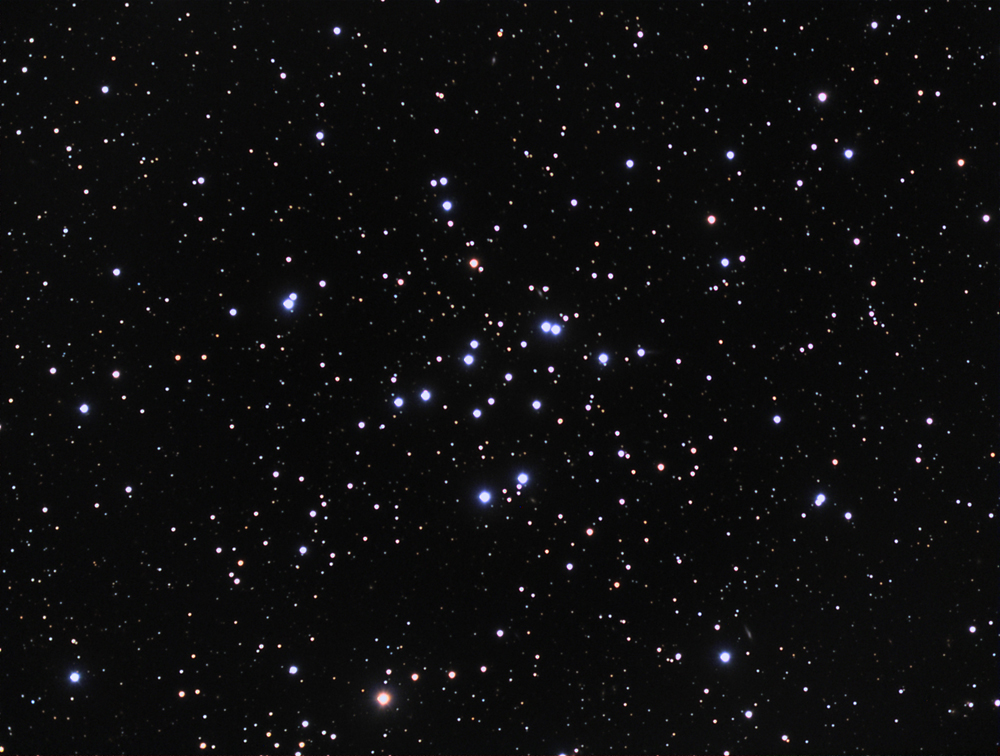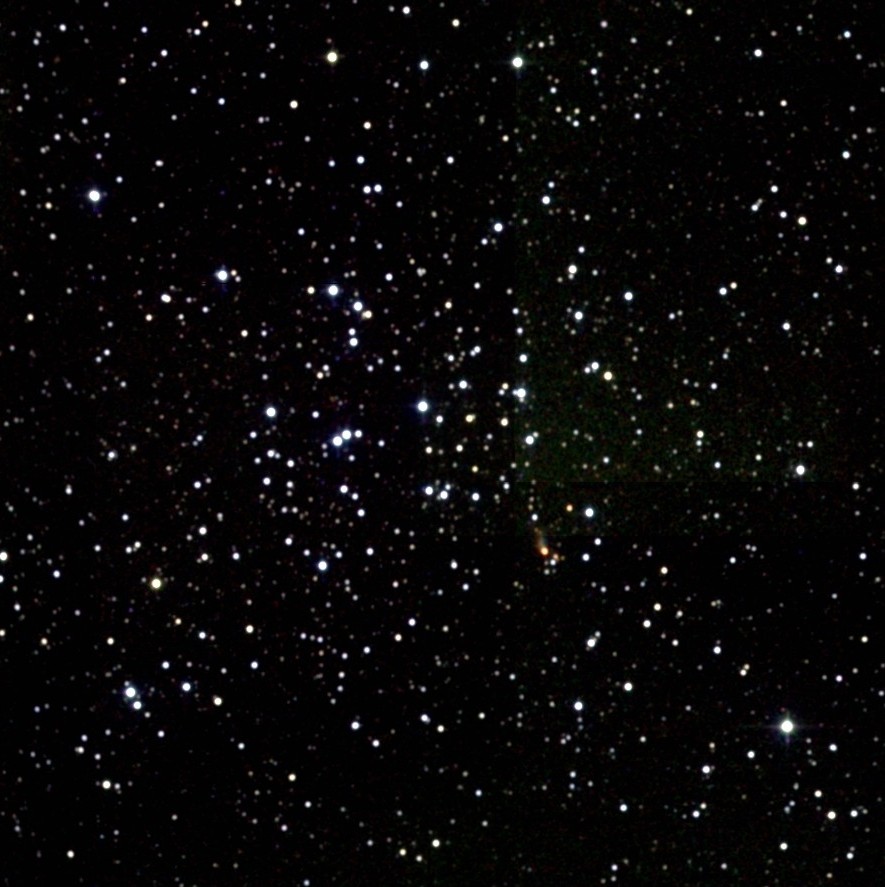Messier Marathon by Remote Telescopes (M30-M39)
梅西耶 馬拉松 之 遠端天文台 版本
Messier marathon is an attempt, usually organized by amateur astronomers, to find as many Messier objects as possible during one night. The Messier catalogue was compiled by French astronomer Charles Messier during the late 18th century and consists of 110 relatively bright deep-sky objects (galaxies, nebulae, and star clusters).
梅西耶 馬拉松 ( Messier Marathon ) 是在一夜內尋找到儘可能多,或儘可能完成全部110個梅西耶天體的活動。
https://zh.wikipedia.org/zh-tw/%E6%A2%85%E8%A5%BF%E7%88%BE%E9%A6%AC%E6%8B%89%E6%9D%BE
梅西耶目錄 是法國天文學家梅西耶在18世紀編輯的,總共有110個相對較明亮的深空天體(星系、星雲和星團)。
https://zh.wikipedia.org/wiki/%E6%A2%85%E8%A5%BF%E8%80%B6%E5%A4%A9%E4%BD%93%E5%88%97%E8%A1%A8
https://zh.wikipedia.org/wiki/%E6%A2%85%E8%A5%BF%E8%80%B6%E5%A4%A9%E9%AB%94
網路上的 遠端天文台,裡面設置 天文望遠鏡, 可以用網路遠端控制,做 天文攝影。
這種方案已經發展多年了,各種功能與介面也越來越純熟了。
遙控望遠鏡(遠端天文台) ( 草山星空 )
https://astrotracer.blogspot.com/2016/07/itelescope.html
我個人因為工作忙碌勞累,不容易參加實體的梅西耶馬拉松,於是就興起一個興趣,想用遠端天文台來拍攝梅西耶深空天體,希望可以在一年,或三年內完成全部110個梅西耶天體。
想稱之為:
梅西耶 馬拉松 之 遠端天文台 版本
預計使用 iTelescope 與 Telescope Live
** CCD 的 LRBG 或 HSO 原始影像 使用 DDS (2020年) 或 CCDStack 疊合 (2023年)
Messier Marathon by Remote Telescopes
Messier Marathon by Remote Telescopes (M1-M9)
Messier Marathon by Remote Telescopes (M10-M19)
Messier Marathon by Remote Telescopes (M20-M29)
Messier Marathon by Remote Telescopes (M30-M39)
Messier Marathon by Remote Telescopes (M40-M49)
Messier Marathon by Remote Telescopes (M50-M59)
Messier Marathon by Remote Telescopes (M60-M69)
Messier Marathon by Remote Telescopes (M70-M79)
Messier Marathon by Remote Telescopes (M80-M89)
Messier Marathon by Remote Telescopes (M90-M99)
Messier Marathon by Remote Telescopes (M100-M110)
Extra:
NGC Omega Centauri, and other Objects ( Omega Centauri NGC )
IC, Barnard, Sh2, Caldwell etc
Astrophotography by Web Remote Telescopes 網路天文攝影 初體驗 (再體驗) + 觀測紀錄
M30 globular cluster ( 球狀星團 )
https://en.wikipedia.org/wiki/Messier_30
Messier 30 (also known as M30 or NGC 7099) is a globular cluster of stars in the southeast of the southern constellation of Capricornus, at about the declination of the sun when the latter is at December solstice.[a] It was discovered by the French astronomer Charles Messier in 1764, who described it as a circular nebula without a star. In the New General Catalogue, compiled during the 1880s, it was described as a "remarkable globular, bright, large, slightly oval."
https://zh.wikipedia.org/zh-tw/M30
M30(也稱為NGC 7099)是位於南天摩羯座的一個球狀星團。它是法國天文學家梅西耶在1764年發現的,但他將它描述為一個沒有恆星的圓形星雲。在1880年代編輯的NGC天體表則將它描述為"顯著的球形,明亮、巨大,略呈橢圓"。這個星團使用10×50的雙筒望遠鏡就很容易看見[9],像是一個朦朧的光斑,直徑大約4角秒寬,沿東西方向的軸稍長些[9]。使用口徑更大的天文望遠鏡,可以解析出單顆的恆星,星團的範圍擴大到12角秒,緻密的核心大約是1角秒[10]。最適合觀賞的時間是每年的8月[9]。
M30與地球的距離大約是27,100光年[4],直徑大約93光年[10]。估計它的年齡是129.3億年[8],質量約是太陽的160,000倍[6]。這個星團的軌道穿過內銀暈,並且是逆行的,這表明它是來自衛星星系,而不是在銀河系內形成[8]。它目前與銀河中心的距離大約是22.2 kly(6.8 kpc),與太陽的距離估計是26 kly(8.0 kpc)[11]。
M30這個集團已經經歷過核心崩潰的動態過程,現在集中在核心的質量大約是每立方秒差距100萬太陽質量;這使它成為銀河系中密度最高的區域之一。如此接近的恆星距離,使得這些恆星不僅有很高的比例是聯星系,而且彼此間會因為質量的轉換而形成藍掉隊星[3]。大規模的分異過程可能導致中心區域獲得大比例的大質量恆星,從而產生顏色梯度,使星團中心的藍色調增強[12]。
M31 Andromeda Galaxy ( 仙女座星系)
https://en.wikipedia.org/wiki/Andromeda_Galaxy
The Andromeda Galaxy is a barred spiral galaxy and is the nearest major galaxy to the Milky Way. It was originally named the Andromeda Nebula and is cataloged as Messier 31, M31, and NGC 224. Andromeda has a D25 isophotal diameter of about 46.56 kiloparsecs (152,000 light-years)[8] and is approximately 765 kpc (2.5 million light-years) from Earth. The galaxy's name stems from the area of Earth's sky in which it appears, the constellation of Andromeda, which itself is named after the princess who was the wife of Perseus in Greek mythology.
https://zh.wikipedia.org/zh-tw/%E4%BB%99%E5%A5%B3%E5%BA%A7%E6%98%9F%E7%B3%BB
仙女座星系(英語:Andromeda Galaxy,國際音標:/ˌanˈdrɒmədə/,也稱梅西耶31、星表編號為M31和NGC 224,在舊文獻中曾經稱為仙女座星雲,中國古代稱為奎宿增廿一)是一個螺旋星系,距離地球約250萬光年,是除麥哲倫雲(地球所在的銀河系的伴星系)以外最近的星系[3]。
Telescope Live SPA-3-CCD 2020-08-14
Re-processing: 2023-05-31
Telescope Live SPA-3-CCD LRGB 600 sec x 2 2022-09-04
iTelescope T20 LRGB 240 sec x 2 2023-05-31
iTelescope T20 LRGB Ha 240 sec x 2 ( Ha as Dark Red) 2023-05-31
T20| T20 Takahashi FSQ-ED 106mm (4.2") SBIG STL-11000M |
M33 Triangulum Galaxy ( 三角座星系)
https://en.wikipedia.org/wiki/Triangulum_Galaxy
The Triangulum Galaxy is a spiral galaxy 2.73 million light-years (ly) from Earth in the constellation Triangulum. It is catalogued as Messier 33 or NGC (New General Catalogue) 598. With the D25 isophotal diameter of 18.74 kiloparsecs (61,100 light-years), the Triangulum Galaxy is the third-largest member of the Local Group of galaxies, behind the Andromeda Galaxy and the Milky Way.
https://zh.wikipedia.org/zh-tw/%E4%B8%89%E8%A7%92%E5%BA%A7%E6%98%9F%E7%B3%BB
三角座星系是位於三角座,距離地球300萬光年的一個螺旋星系,它被編入梅西耶33,NGC 598,M33。三角座星系繼仙女座星系和銀河系之後,是本星系群第三大的星系,也是長久以來以肉眼可以看見的最遙遠天體。這個星系是本星系群中最小的螺旋星系,並且因為與仙女座星系的有交互作用、速度[7],與在夜空中互相靠近而被認為是仙女座星系的一個衛星星系[7]。
M34 Open Cluster, Spiral Cluster ( 疏散星團 )
https://en.wikipedia.org/wiki/Messier_34
Messier 34 (also known as M34, NGC 1039, or the Spiral Cluster) is a large and relatively near open cluster in Perseus. It was probably discovered by Giovanni Batista Hodierna before 1654[4] and included by Charles Messier in his catalog of comet-like objects in 1764.
https://zh.wikipedia.org/zh-tw/M34_(%E7%96%8F%E6%95%A3%E6%98%9F%E5%9B%A2)
M34 (NGC 1039)是在英仙座的一個疏散星團。它可能在1654年之前就被喬瓦尼·巴蒂斯塔·霍迪納發現[4],並在1764年被夏爾·梅西耶收錄在他的類似彗星天體目錄中。
M35 open cluster ( 疏散星團 )
https://en.wikipedia.org/wiki/Messier_35
Messier 35 or M35, also known as NGC 2168, is a relatively close open cluster of stars in the west of Gemini, at about the declination of the sun when the latter is at June solstice.[a] It was discovered by Philippe Loys de Chéseaux around 1745 and independently discovered by John Bevis before 1750.
https://zh.wikipedia.org/zh-tw/M35
NGC 2168,M35,是位於雙子座的疏散星團,梅西耳1764年8月30日為它編號,在1745年或1746年被Philippe Loys de Chéseaux 發現,約翰·貝維斯(John Bevis)則在1750年之前重新發現M35。
M36 Open Cluster, Pinwheel Cluster ( 疏散星團 )
https://en.wikipedia.org/wiki/Messier_36
Messier 36 or M36, also known as NGC 1960 or the Pinwheel Cluster, is an open cluster of stars in the somewhat northern Auriga constellation. It was discovered by Giovanni Batista Hodierna before 1654, who described it as a nebulous patch.[5] The cluster was independently re-discovered by Guillaume Le Gentil in 1749, then Charles Messier observed it in 1764 and added it to his catalogue.
https://zh.wikipedia.org/zh-tw/M36_(%E7%96%8F%E6%95%A3%E6%98%9F%E5%9B%A2)
M36,也稱為NGC 1960,是在御夫座的一個疏散星團。它是喬瓦尼·巴蒂斯塔·霍迪納在1654年之前發現的,當時被描述成一個模糊的斑塊[5]。這個星團於1749年被紀曉姆·勒讓提獨立再度發現,然後梅西耶在1749年觀察到它收錄至目錄中[6]。
M37 Open Cluster ( 疏散星團 )
https://en.wikipedia.org/wiki/Messier_37
Messier 37 (also known as M37, NGC 2099, or the Salt and Pepper Cluster) is the brightest and richest open cluster in the constellation Auriga. It was discovered by the Italian astronomer Giovanni Battista Hodierna before 1654. M37 was missed by French astronomer Guillaume Le Gentil when he rediscovered M36 and M38 in 1749. French astronomer Charles Messier independently rediscovered M37 in September 1764 but all three of these clusters were recorded by Hodierna.
https://zh.wikipedia.org/zh-tw/M37_(%E7%96%8F%E6%95%A3%E6%98%9F%E5%9B%A2)
M 37(也稱為NGC 2099)是位於御夫座內富含恆星的一個疏散星團。它是御夫座內最亮的三個疏散星團之一,在1654年之前就已經被義大利天文學家Giovanni Battista Hodierna發現了。法國天文學家Guillaume Le Gentil在1749年重新發現M36和M38時錯過了M37。法國天文學家梅西耶在1764年9月獨立的重新發現了M37,但這三個星團已由霍迪娜收錄在星表內。它在川普勒的分類法中屬於I、1、r或I、2、r。它的總亮度約相當於6等星,使用雙筒望遠鏡就可以看見,但看似星雲狀,外觀接近圓形。
M38 Open Cluster ( 疏散星團 )
https://en.wikipedia.org/wiki/Messier_38
Messier 38 or M38, also known as NGC 1912 or Starfish Cluster,[4] is an open cluster of stars in the constellation of Auriga. It was discovered by Giovanni Batista Hodierna before 1654 and independently found by Le Gentil in 1749. The open clusters M36 and M37, also discovered by Hodierna, are often grouped together with M38.[5] Distance is about 1.066 kpc (3,480 ly) away from Earth.[2] The open cluster NGC 1907 lies nearby on the sky, but the two are most likely just experiencing a fly-by, having originated in different parts of the galaxy.
https://zh.wikipedia.org/zh-tw/M38_(%E7%96%8F%E6%95%A3%E6%98%9F%E5%9B%A2)
M38,也稱為NGC 1912,是在御夫座的一個疏散星團。它是在1654年之前被喬瓦尼·巴蒂斯塔·霍迪埃納,並在1749年再被Le Gentil獨立發現。M36和M37也是喬瓦尼·巴蒂斯塔·霍迪埃納發現的,並且經常與M38相提並論[4]。M38距離地球大約1.066 kpc(3,480 ly)[2]。疏散星團NGC 1907就在它的附近,並且兩者可能起源於星系的不同部分,因為一次飛掠的事件而分離出來[1]。
M39 Open Cluster ( 疏散星團 )
https://en.wikipedia.org/wiki/Messier_39
Messier 39 or M39, also known as NGC 7092, is an open cluster of stars in the constellation of Cygnus, positioned two degrees to the south of the star Pi Cygni[7] and around 9° east-northeast of Deneb.[8] The cluster was discovered by Guillaume Le Gentil in 1749, then Charles Messier added it to his catalogue in 1764.
https://zh.wikipedia.org/zh-tw/M39_(%E7%96%8F%E6%95%A3%E6%98%9F%E5%9C%98)
梅西耶39或M39,也稱為NGC 7092,是在天鵝座的一個疏散星團,位於恆星螣蛇四南面兩度處, 和天津四東北偏東9°左右。這個星團於1749年由紀堯姆·勒讓蒂發現,然後查爾斯·梅西耶於1764年將其添加到他的星表中。
iTelescope T68 color 240sec x2 2023-05-21
T682023-04-08
2023-04-11





.jpg/1280px-M31_09-01-2011_(cropped).jpg)






















沒有留言:
張貼留言